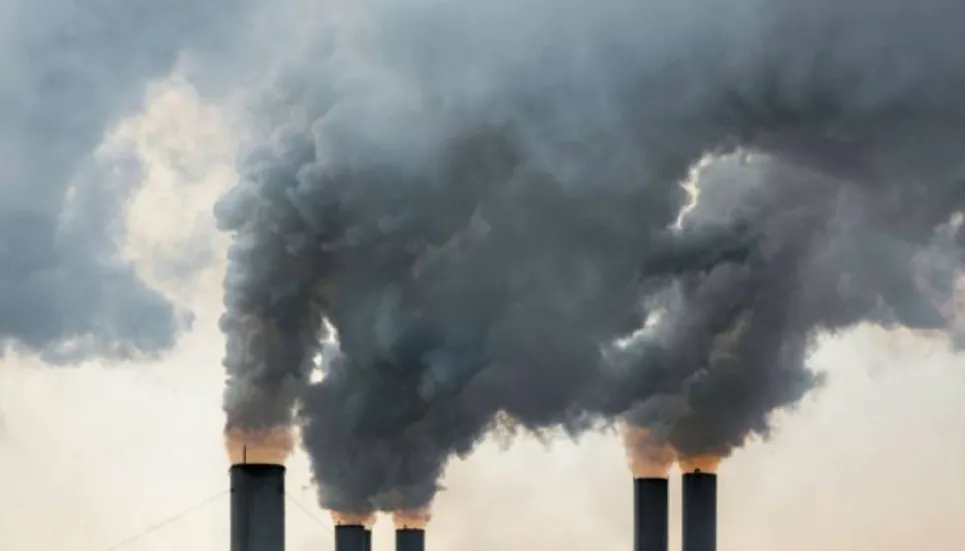Home ›› 23 Jul 2021 ›› World Biz

Some 4,000km from Japan, on a verdant, mangrove-lined island in south-eastern Bangladesh, sits one of the biggest and most controversial tests of Tokyo’s commitment to help phase out fossil fuels, reports the Financial Times
Thanks to low-interest loans from the Japan International Cooperation Agency, Bangladesh is currently building the Matarbari coal plant: a power complex set to be completed by 2024. And JICA, a government body, has been considering funding an expansion to the 10-year-old project, known as Matarbari Phase 2 — despite, earlier this year, saying it would work with Bangladesh “to promote a low- or zero-carbon transformation” of its energy economy.
This debate around the Matarbari plant embodies the tensions in Japan’s fossil-fuel policies. Its financing of coal power in developing countries risks falling out of step with moves to promote renewable energy at home and abroad.
In Bangladesh — a low-lying country highly vulnerable to the effects of climate change, such as rising sea levels and erratic rainfall — the government of prime minister Sheikh Hasina has been backing coal to meet energy needs.
However, official enthusiasm for mega-projects such as Matarbari is waning as renewable alternatives become cheaper. Hasina’s government last month scrapped 10 of the coal-power plants it had planned. While the mooted Matarbari Phase 2 project was not officially among them, analysts say it is looking less and less viable.
“Now, [Bangladesh’s] focus is more pro-renewables, and [it] seems to be turning away from coal,” says Simon Nicholas, an analyst with US think-tank the Institute for Energy Economics and Financial Analysis (IEEFA). “That’s more economics than anything else.” Bangladesh says it wants to generate 40 per cent of its power from renewable energy within 20 years.
Yesterday’s policy
Japan has long invested in Bangladeshi infrastructure, a partnership that stems back nearly as far as the South Asian nation’s independence 50 years ago. But JICA’s support for the Matarbari units has faced severe censure.
“Japan has no right to invest in coal in other countries — they have a responsibility to ensure zero emissions,” argues Hasan Mehedi, an activist with the Bangladesh Working Group on External Debt, which opposes the project. Japan is “making money . . . transferring pollution to other countries so that they can phase themselves clean,” Mehedi says.
Within Japan, too, there is belated recognition that its support for overseas coal plants has become anachronistic.
Until recently, its suppliers of coal-fired boilers and turbines were regarded as the kind of strategic national industry the country had a duty to support. Now, it has realised that there is little future in coal. That prompted a big shift in policy last year, when Japan adopted a presumption against new coal projects overseas. Banks began to question whether coal financing was worth the international opprobrium.
“There are very few possibilities for Japanese industry to export coal power plants,” says University of Tokyo professor Yukari Takamura, who was part of a government expert panel on the topic. She adds that “almost all Japanese banks have now said they will not finance new coal plants overseas.”
While there is some ambiguity about official Japanese policy — there is still no clear ban on coal projects overseas — the government made its strongest commitment yet at last month’s G7 summit in the UK: agreeing to halt all new direct government support for unabated coal power generation abroad by the end of 2021 (that is, plants that do not capture the carbon dioxide they produce).
That has left a few pipeline projects, including Matarbari Phase 2, in a no man’s land. They now run against official policy, but commitments were made. JICA says that preparatory surveys are continuing.
Who benefits?
Local attitudes towards the Matarbari project, about 40 miles from Bangladesh’s second-largest city Chattogram, are polarised.
Supporters have touted its job-creating potential, but critics accuse it of displacing residents and polluting the adjacent Kohelia river. Sharif Jamil, of environmental group Bangladesh Poribesh Andolon, says locals complain that construction contractors are bringing in workers from outside areas. They had hoped “the area will be developed like Singapore,” he says. “But now the myth has gone.”
IEEFA’s Nicholas argues that such projects will exacerbate Bangladesh’s power overcapacity, with utilisation of the power system currently around 40 per cent. He thinks the country should
upgrade its grid to make better use of its existing electricity supply and to meet its renewable energy targets.
“Until recently, Bangladesh was expected to be one of the key growth markets for seaborne thermal coal,” he says. “The potential growth markets around Asia — that were supposed to replace Japan, South Korea and China as they shift away from thermal coal imports — increasingly look like they will disappoint the coal industry.”